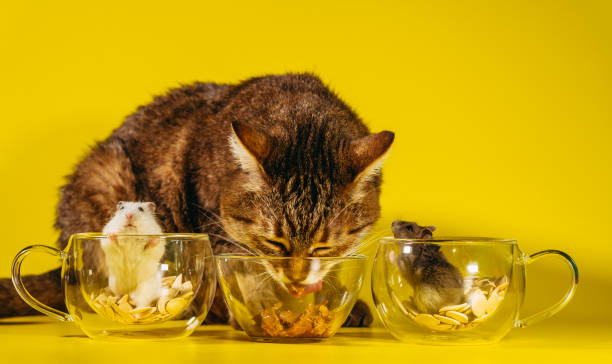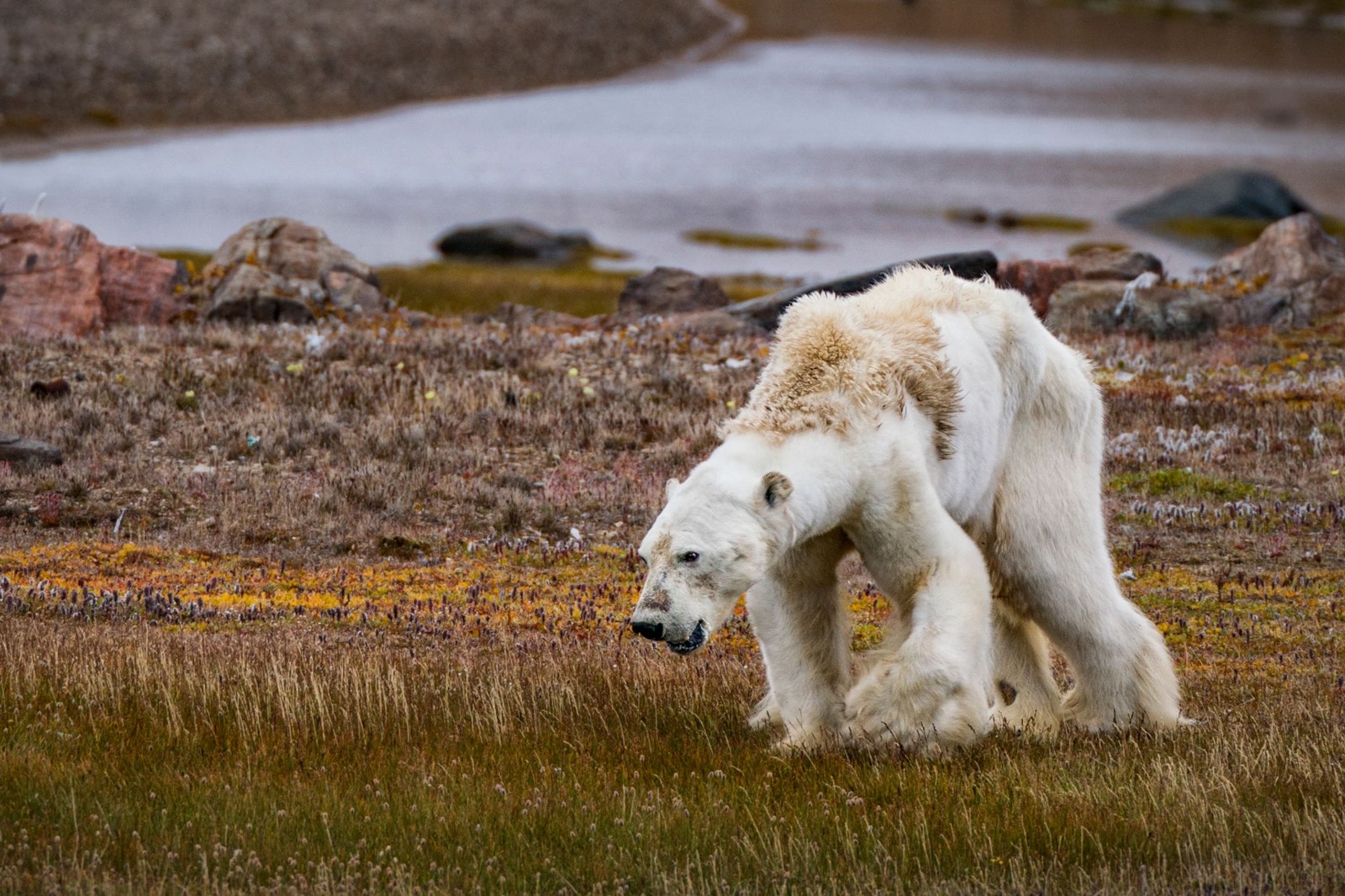
Do Pets Have Taste Preferences? How Flavor Shapes Nutrition Choices
Explore how pets perceive flavors, the biological basis of their taste preferences, and how these preferences influence their nutrition choices and overall health.
🐶 Pet Star
28 min read · 23, Jun 2025

Introduction: The Curious Case of Pet Taste Preferences
Pets have long been cherished companions, but their eating habits and food choices often puzzle their owners. Unlike humans, whose taste preferences are well documented, understanding how pets perceive flavor and make nutritional choices remains a developing field. This article delves into the science of taste in pets, exploring how flavor shapes their dietary decisions, influences nutrient intake, and ultimately impacts their well-being.
The Biology of Taste in Pets
Taste Buds and Sensory Perception
Pets, including dogs, cats, and other common companions, have taste buds similar in structure but differing in number compared to humans. Dogs possess approximately 1,700 taste buds, while cats have around 470, far fewer than humans, who have about 9,000. These variations influence flavor perception and preference.
Basic Taste Modalities in Pets
Research shows that pets can detect five basic tastes: sweet, sour, salty, bitter, and umami (savory). However, sensitivity varies:
- Dogs: Sensitive to sweet and umami tastes, reflecting their omnivorous ancestry.
- Cats: Obligate carnivores, cats lack functional sweet receptors but have heightened sensitivity to amino acids, emphasizing umami flavors.
- Other pets: Small mammals and birds show diverse taste receptor profiles aligned with their diets.
Evolutionary Influences on Taste Preferences
Dietary Niches and Taste Receptors
Taste preferences in pets reflect evolutionary dietary niches. For example, carnivorous cats prioritize meat flavors (umami), while omnivorous dogs enjoy a broader range of tastes, including sweetness.
Genetic Variations and Breed Differences
Genetic factors influence taste sensitivity. Certain dog breeds show stronger preferences for fatty or protein-rich foods, while others are more selective.
How Flavor Influences Nutrition Choices
Flavor and Palatability
Palatability—a combination of taste, aroma, and texture—plays a crucial role in pet food acceptance. Flavor preferences can direct pets toward foods higher in protein, fats, or carbohydrates, influencing nutritional balance.
Conditioned Flavor Preferences
Pets develop flavor preferences through experience. Positive post-ingestive effects reinforce certain flavors, shaping long-term dietary choices.
Scientific Studies on Pet Taste Preferences
Experimental Evidence in Dogs
Studies reveal dogs prefer sweetened foods and meat-based flavors. For example, a 2014 study found that dogs show increased licking behavior for sweet and umami-flavored solutions.
Research on Cats
Cats ignore sweet flavors but show strong preferences for savory and protein-rich tastes. Behavioral tests confirm aversion to bitter and sour tastes, likely a protective mechanism.
The Role of Smell and Texture in Flavor Perception
Olfaction’s Influence on Taste
Smell is crucial for flavor perception in pets, often more important than taste alone. Dogs’ extraordinary olfactory abilities guide food selection alongside taste.
Texture Preferences
Crunchiness, softness, and moisture levels influence acceptance, with pets showing individual variation.
Impact of Taste Preferences on Pet Health
Obesity and Overfeeding Risks
Flavor-driven preferences for high-fat or sugary treats can lead to overfeeding and obesity in pets, mirroring human challenges.
Nutritional Deficiencies and Selective Eating
Picky eating behaviors can cause nutrient imbalances if flavor preferences limit dietary variety.
Commercial Pet Food Industry and Flavor Engineering
Designing Flavor Profiles
Pet food companies engineer flavors to appeal to pet taste preferences, often adding animal digest, fats, and palatants to enhance palatability.
Ethical Considerations
Balancing flavor appeal with nutritional quality and avoiding additives harmful to pets is a growing concern.
Training and Behavioral Influence on Flavor Acceptance
Using Positive Reinforcement
Flavor preferences can be shaped by training, using favored tastes as rewards to encourage healthier eating habits.
Introducing New Foods
Gradual exposure to new flavors improves acceptance and dietary diversity.
The Influence of Age and Health on Pet Taste Preferences
Taste Changes Across Life Stages
Just as in humans, pets experience shifts in taste sensitivity as they age. Puppies and kittens may show curiosity and openness to a range of flavors, while older pets often develop diminished taste and smell senses, leading to reduced appetite or preference for stronger flavors.
Aged pets frequently prefer foods with richer flavors and more intense aromas to compensate for sensory decline. This can affect nutritional intake if not managed properly, emphasizing the need for tailored diets that consider these changes.
Impact of Health Conditions on Flavor Preferences
Certain health conditions can alter taste perception and preferences in pets. Dental diseases, gastrointestinal issues, and medications may reduce a pet's interest in food or change their preferred flavors and textures.
For example, pets with oral pain may avoid hard or crunchy foods, while gastrointestinal discomfort may create aversions to specific ingredients. In these cases, veterinarians may recommend diets with adjusted flavor profiles or textures to maintain adequate nutrition.
The Role of Nutritional Needs in Shaping Flavor Preferences
Nutritional Wisdom: Are Pets Guided by Their Dietary Requirements?
The concept of “nutritional wisdom” suggests that animals can instinctively select foods that meet their nutritional needs. Some studies indicate that pets might develop preferences for flavors linked to required nutrients—for example, a dog needing more protein might seek out meat-flavored foods more eagerly.
While scientific consensus on this behavior in domesticated pets is still emerging, anecdotal evidence and controlled studies hint that nutritional deficiencies or imbalances can influence flavor preferences, prompting animals to seek out foods that restore nutrient balance.
The Influence of Macronutrients on Flavor Appeal
Protein, fat, and carbohydrate contents significantly impact flavor profiles and palatability. High-protein and high-fat flavors tend to be more appealing to dogs, which aligns with their ancestral diet.
Cats, as obligate carnivores, are drawn primarily to protein and umami flavors but generally show low interest in carbohydrates. Understanding these preferences helps pet food manufacturers formulate diets that both satisfy taste and meet nutritional requirements.
Environmental and Social Factors Affecting Pet Food Preferences
The Role of Environment in Flavor Acceptance
Environmental factors such as feeding location, presence of other animals, and feeding schedule can influence flavor acceptance. Pets may be less likely to try new foods if they feel stressed or distracted during mealtime.
A calm, familiar environment promotes relaxed eating behavior and openness to different flavors. Conversely, competition or stress can lead to rushed eating or refusal to try novel foods.
Social Influence: Learning from Other Pets
Pets, especially dogs, can be influenced by the eating behaviors of their peers. Observational learning allows them to accept new flavors by watching other animals eat and enjoy those foods.
Multi-pet households often benefit from this dynamic, as less adventurous pets may be encouraged to try foods their more curious companions eat readily.
The Intersection of Flavor Preferences and Pet Nutrition Challenges
Picky Eating: Causes and Consequences
Picky eating is a common challenge among pet owners and can stem from genetic predisposition, early life experiences, or environmental factors. Pets that consistently reject certain flavors or textures risk nutritional deficiencies, which can impact growth, immune function, and overall health.
Addressing picky eating requires a multi-faceted approach including flavor variety, texture adjustments, and behavioral interventions.
Obesity and Overconsumption Linked to Flavor Preferences
Highly palatable foods—often rich in fats and sugars—can lead to overconsumption and obesity in pets. Just as with humans, the “reward” system in pets’ brains can drive cravings for these flavors, leading to health issues.
Educating pet owners on balanced feeding practices and understanding pets' flavor-driven tendencies is vital for prevention.
Conclusion
Understanding whether pets have taste preferences and how flavor influences their nutritional choices provides valuable insights for pet owners, veterinarians, and pet food manufacturers alike. Pets do exhibit distinct taste preferences shaped by their evolutionary backgrounds, biology, and individual experiences. Dogs, with their omnivorous ancestry, tend to prefer sweet and savory flavors, while cats, as obligate carnivores, are more attuned to protein-rich, umami tastes and indifferent to sweetness.
Flavor is not just about taste; it is a complex sensory experience involving smell, texture, and even environmental factors. These elements combine to affect palatability and acceptance, ultimately influencing nutrient intake and health outcomes. Recognizing the role of flavor in pet feeding behavior enables owners to manage picky eating, encourage dietary variety, and prevent issues such as obesity or malnutrition.
Moreover, flavor preferences can be modified through positive reinforcement and gradual introduction of new foods, facilitating healthier eating habits. Age, health status, and environmental context also dynamically impact taste preferences, requiring tailored nutritional strategies over a pet’s lifetime.
The pet food industry continually innovates to create palatable diets that meet nutritional needs while appealing to pets’ taste preferences, balancing natural and artificial flavorings responsibly. Continued research into how pets perceive flavor and make nutritional choices will further enhance our ability to support their health and happiness.
Ultimately, flavor is a critical factor shaping pets’ nutrition choices, reflecting a fascinating intersection of biology, behavior, and environment. By appreciating and responding to pets’ flavor preferences, we can improve their diet quality and strengthen the human-animal bond.
Q&A
Q1: Do pets have taste preferences similar to humans?
A1: Yes, pets have taste preferences, but they differ from humans due to variations in taste receptors and evolutionary dietary needs.
Q2: Why don’t cats taste sweetness?
A2: Cats lack functional sweet taste receptors because they evolved as obligate carnivores relying on protein-rich diets.
Q3: How important is smell in a pet’s flavor perception?
A3: Smell is crucial and often more important than taste for pets, especially dogs, due to their highly developed olfactory system.
Q4: Can pets develop new flavor preferences over time?
A4: Yes, through positive reinforcement and repeated exposure, pets can learn to accept and even prefer new flavors.
Q5: How do age and health affect pet taste preferences?
A5: Aging and health issues can reduce taste sensitivity, making pets prefer stronger flavors and influencing their appetite.
Q6: Does texture influence what pets like to eat?
A6: Absolutely. Texture plays a key role in palatability, with preferences varying between crunchy, soft, and moist foods.
Q7: Can flavor preferences lead to health problems in pets?
A7: Yes, strong preferences for high-fat or sugary foods can contribute to obesity and related health issues.
Q8: How do pet food manufacturers enhance flavor?
A8: They use natural and artificial flavorings like animal digest and palatants to increase palatability while ensuring nutritional balance.
Q9: Is it possible for pets to instinctively choose foods that meet their nutritional needs?
A9: There is some evidence pets may show “nutritional wisdom” by preferring flavors linked to nutrients they require, though more research is needed.
Q10: How can owners help picky pets eat a balanced diet?
A10: Gradually introducing new flavors, using positive reinforcement, and creating a calm feeding environment can improve acceptance.
Similar Articles
Find more relatable content in similar Articles

Sustainable Pet Products: What to Look for in 2025...
As sustainability becomes a ce.. Read More

Pets and Mental Health: The Science Behind Emotional H..
Discover the profound impact o.. Read More

Composting Pet Waste: A Greener Way to Clean Up...
As pet ownership continues to .. Read More

How Climate Change Affects Wild and Domestic Animals...
Climate change is dramatically.. Read More
Explore Other Categories
© 2024 Copyrights by rPets. All Rights Reserved.